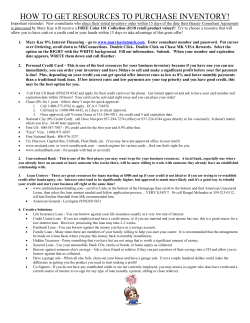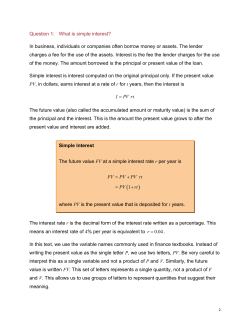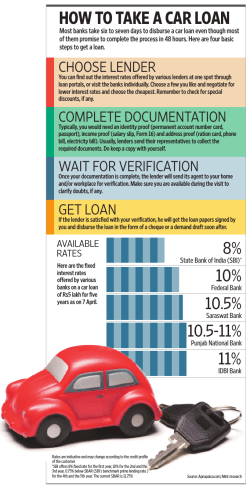
UNIVERSITY OF ILLINOIS AT URBANA-CHAMPAIGN Actuarial Science Program DEPARTMENT OF MATHEMATICS
UNIVERSITY OF ILLINOIS AT URBANA-CHAMPAIGN Actuarial Science Program DEPARTMENT OF MATHEMATICS Math 210 Theory of Interest Prof. Rick Gorvett Fall, 2014 Homework Assignment # 6 (max. points = 10) Due at the beginning of class on Thursday, October 23, 2014 You are encouraged to work on these problems in groups of no more than 3 or 4. However, each student must hand in her/his own answer sheet. Please show your work – enough to show that you understand how to do the problem – and circle your final answer. Full credit can only be given if the answer and approach are appropriate. Please give answers to two decimal places – e.g., xx.xx% and $xx,xxx.xx . Note: Homework assignments are due at the beginning of the class. Assignments will not be accepted after 9:45 am on the due date. (1) You borrow $500,000 for 30 years, at an annual effective interest rate of 6%. You intend to pay off the loan via level amortization payments at the end of each year. Find the total amount of payments you make over the life of the loan. (2) You borrow $200,000 for 200 years, at an annual effective interest rate of 8%. You intend to pay off the loan via level year-end amortization payments. Let X be the total amount of interest you pay during the life of the loan. Let Y be the total amount of principal you pay during the life of the loan. Find X ÷Y. (3) You borrow $ X for 5 years, at a nominal annual rate of interest of i (2) = 12% . You intend to pay off the loan via 60 level month-end amortization payments of $2,500 each. Find X. (4) You borrow $400,000 for 30 years, at an annual effective interest rate of 8%. You intend to pay off the loan via level amortization payments at the end of each year. Find the amount of principal in the 12th payment. (5) Same situation as problem (4): You borrow $400,000 for 30 years, at an annual effective interest rate of 8%. You intend to pay off the loan via level amortization payments at the end of each year. Find the amount of interest in the 19th payment. (6) You take out a 30-year $300,000 mortgage at an effective annual interest rate of 8%. Immediately after your 16th payment, you make an additional principal repayment of $40,000, and then refinance the outstanding balance with a new 15-year mortgage at a 4% effective annual interest rate. Both mortgages require annual year-end level 1 amortization payments. Find the amount of each annual amortization payment in the new mortgage. (7) You borrow $400,000 for 20 years, at a nominal annual interest rate of 8% convertible quarterly. You intend to pay off the loan via level amortization payments at the end of each quarter. Determine the amount of each quarterly payment. (8) Same as problem (7), except that the annual interest rate is 8% effective. You intend to pay off the loan via level amortization payments at the end of each quarter. Determine the amount of each quarterly payment. (9) On January 1, 2015, you borrow $200,000, at an effective annual interest of 8%. You intend to pay off the loan via annual level amortization payments – however, your first payment will not occur until December 31, 2017. You will make a total of 30 level annual payments, with the last payment being made at December 31, 2046. Prior to the first payment, the loan accumulates charged interest. Determine the amount of each annual payment. (10) You borrow $100,000 for 10 years, at an effective annual interest rate of 8%. Instead of using an amortization approach, however, you use a sinking fund approach: You pay 8% interest (= $8,000) at the end of each year for ten years, and you also deposit X into a “sinking fund” at the end of each year for ten years. The sinking fund earns interest at a rate of 6% effective. At the end of the ten years, the sinking fund must have an amount equal to the original amount of the loan, $100,000, so that you can pay off the loan. Find X. 2
© Copyright 2025










